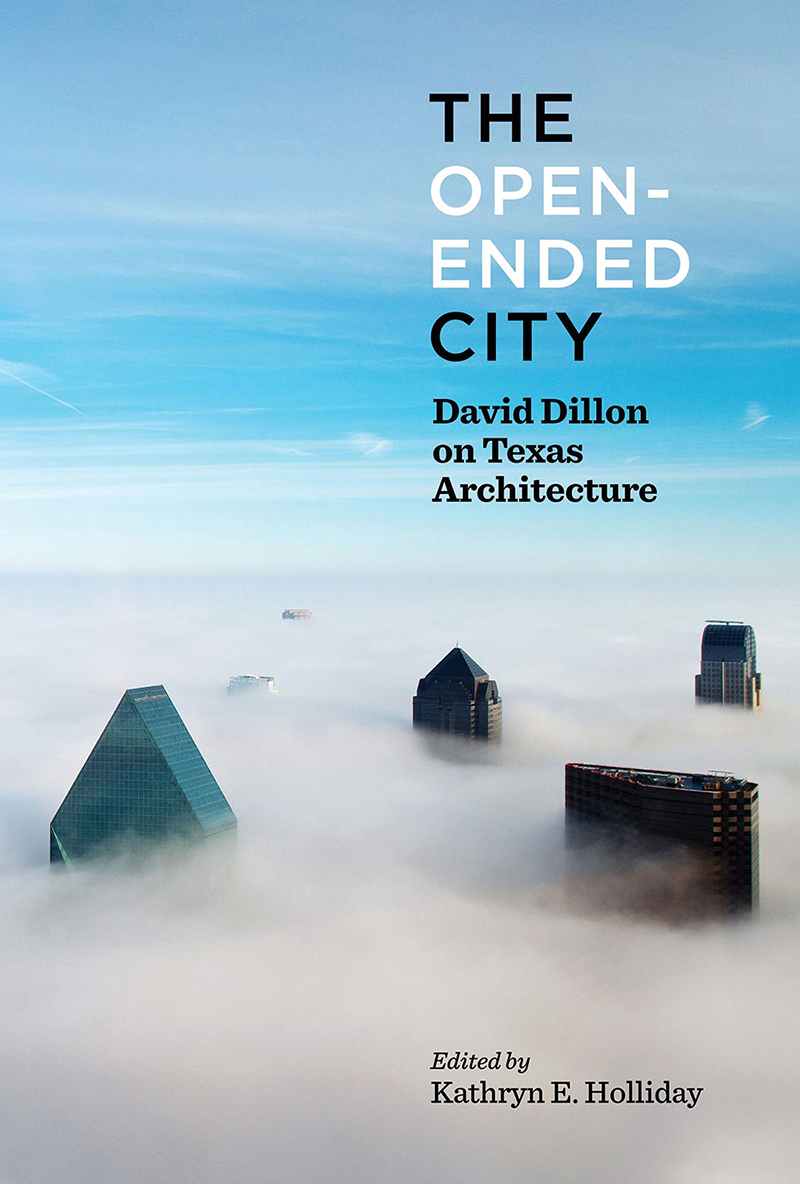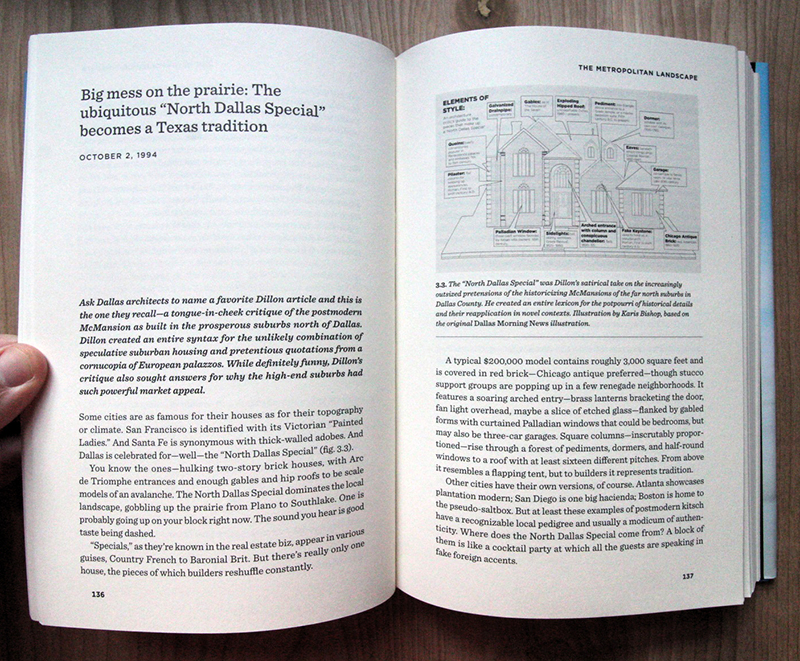The Open-Ended City
The Open-Ended City: David Dillon on Texas Architecture
Kathryn E. Holliday (Editor)
University of Texas Press, May 2019

Hardcover | 6 x 9 inches | 448 pages | 62 illustrations | English | ISBN: 978-1477317617 | $29.95
Publisher Description:




Author Bio:
(Note: Books bought via these links send a few cents to this blog, keeping it afloat.)




Kathryn E. Holliday (Editor)
University of Texas Press, May 2019

Hardcover | 6 x 9 inches | 448 pages | 62 illustrations | English | ISBN: 978-1477317617 | $29.95
Publisher Description:
In 1980, David Dillon launched his career as an architectural critic with a provocative article that asked “Why Is Dallas Architecture So Bad?” Over the next quarter century, he offered readers of the Dallas Morning News a vision of how good architecture and planning could improve quality of life, combatting the negative effects of urban sprawl, civic fragmentation, and rapacious real estate development typical in Texas cities. The Open-Ended City gathers more than sixty key articles that helped establish Dillon’s national reputation as a witty and acerbic critic, showing readers why architecture matters and how it can enrich their lives.dDAB Commentary:
Kathryn E. Holliday discusses how Dillon connected culture, commerce, history, and public life in ways that few columnists and reporters ever get the opportunity to do. The articles she includes touch on major themes that animated Dillon’s writing: downtown redevelopment, suburban sprawl, arts and culture, historic preservation, and the necessity of aesthetic quality in architecture as a baseline for thriving communities. While the specifics of these articles will resonate with those who care about Dallas, Fort Worth, and other Texas cities, they are also deeply relevant to all architects, urbanists, and citizens who engage in the public life and planning of cities. As a collection, The Open-Ended City persuasively demonstrates how a discerning critic helped to shape a landmark city by shaping the conversation about its architecture.
If David Dillon, architecture critic at the Dallas Morning News from 1981 to 2006, were still alive he'd be 78 years old. Dillon died in 2010, though when I think about it now it doesn't seem so long ago that I heard the news. He was one of the most respected US architecture critics when he died, though he hadn't written regular columns for a few years. In "Architecture criticism and the public" from a 2009 issue of Texas Architect — one of Dillon's last pieces and included in this collection of his best writings — he explains how he took a buyout from the newspaper in 2006 and then states bluntly, "I will not be replaced." Yet readers of DMN, or people starved for serious architectural criticism online, know that the paper does have an architectural critic: Mark Lamster. He was appointed to the post in 2013, also taking a professorship at University of Texas Arlington. The two positions are related. As Kathryn Holliday points out at the beginning of her edited collection of Dillon's articles, a partnership between DMN and UTA emerged after the David Dillon Symposium in 2012, which itself took place one year after the formation of the David Dillon Center for Texas Architecture at UTA. In other words, Dillon's sudden, untimely death in 2010 at the age of only 68 led to a critic filling his old post at the paper and a new educational entity that helps in extending Dillon's approach to criticism, in which accessible writing aided in enabling meaningful public debates over changes to the built environment, further into the 21st century.Spreads:
The Open-Ended City collects more than 65 pieces (of well over 1,000) Dillon wrote for the Dallas Morning News as well as a couple pieces written for other publications, including the Texas Architect article already mentioned and what is probably his most influential and lasting text: "Why is Dallas architecture so bad?" from a 1980 issue of D Magazine. Those two essays appear in the first chapter, The Critic's Voice, and the DMN pieces follow in six thematic chapters: Rethinking Downtown, The Metropolitan Landscape, Arts Districts, Historic Preservation, Texas Architects and Developers, and Aesthetics and Architecture. Bookending these chapters are Holliday's introduction, which gives background on Dillon's 25-year tenure and explains how the essays were selected, and an afterword by Stephen Fox, adapted from a paper at the 2012 symposium that put Dillon's work into a deeper lineage of architectural criticism in Texas. The thematic chapters make it clear that Dillon did not write about just capital-A architecture; he looked at the whole built environment. With articles in chronological order across each chapter and titles that are highly descriptive (e.g., "The new skyline: Once it looked like Everytown, USA. Now Dallas has grown up," from December 1987), it's easy to jump around the book based on one's interests. Of course, given Dillon's focus on local criticism, residents of Dallas will be drawn to the book more than outsiders. But in 2019, when architectural criticism in the US is hard to come by (Lamster is in the minority), Dillon's articles still provide plenty of lessons while tracing a changing metropolis he influenced in his own way.




Author Bio:
Kathryn Holliday is an associate professor of architecture at the University of Texas at Arlington, where she is also the founding director of the David Dillon Center for Texas Architecture. She is the author of Leopold Eidlitz: Architecture and Idealism in the Gilded Age and Ralph Walker: Architect of the Century.Purchase Links:
(Note: Books bought via these links send a few cents to this blog, keeping it afloat.)



